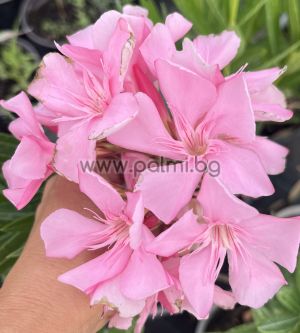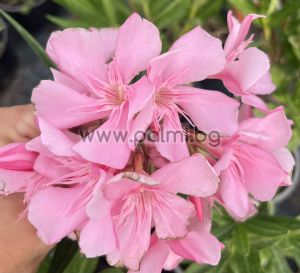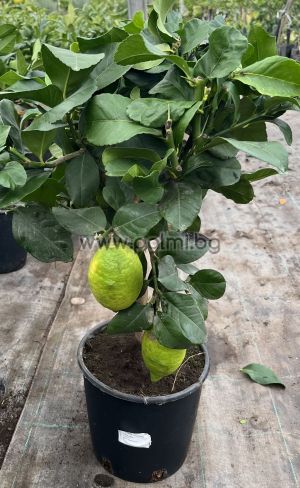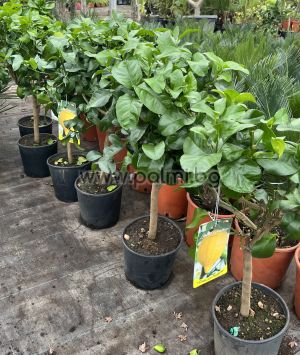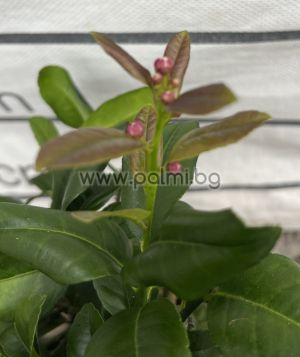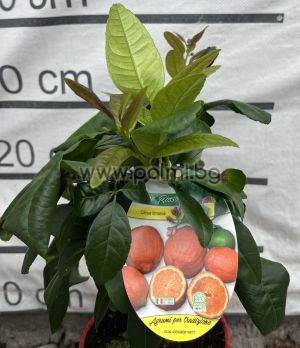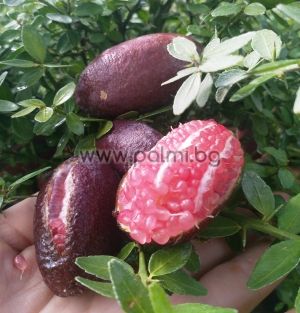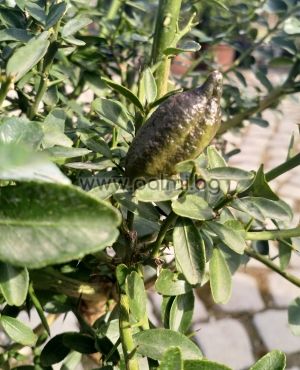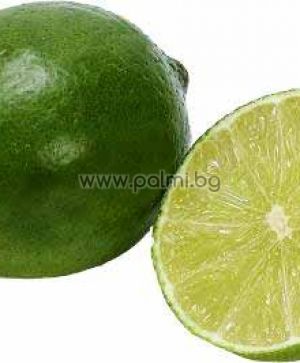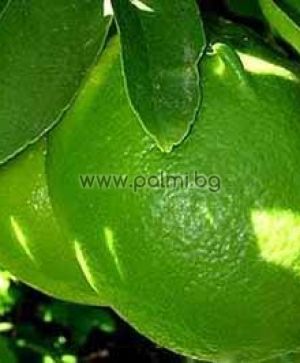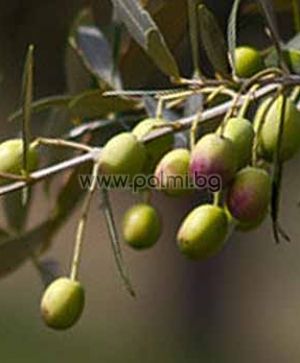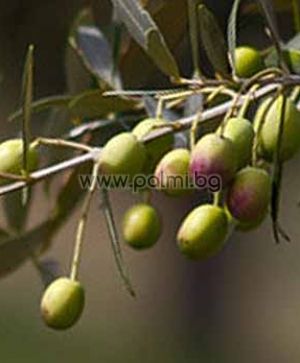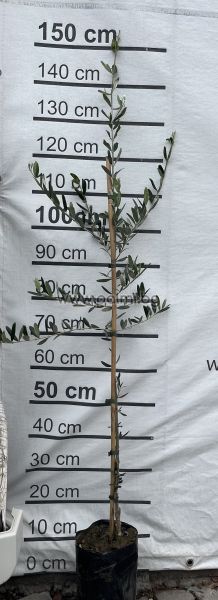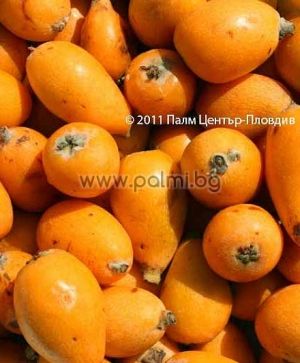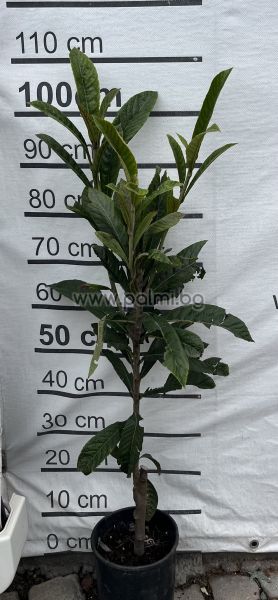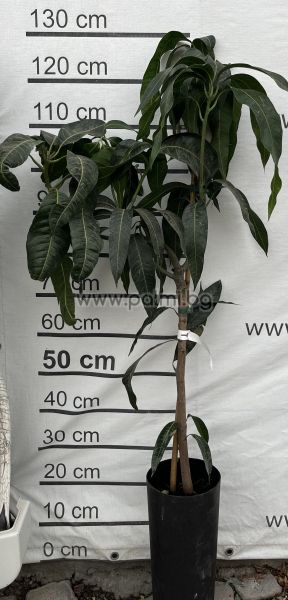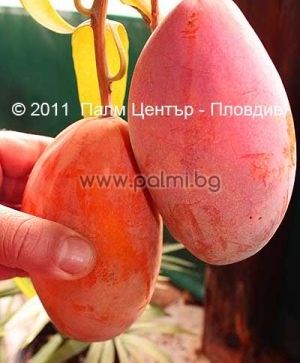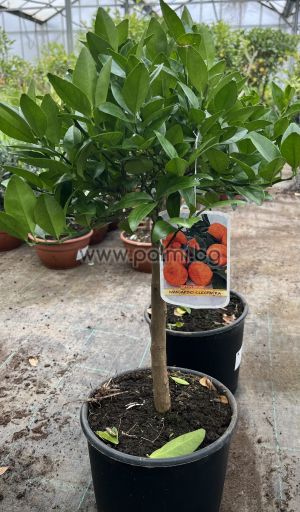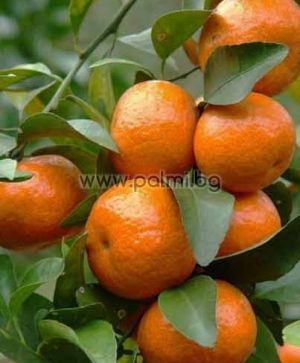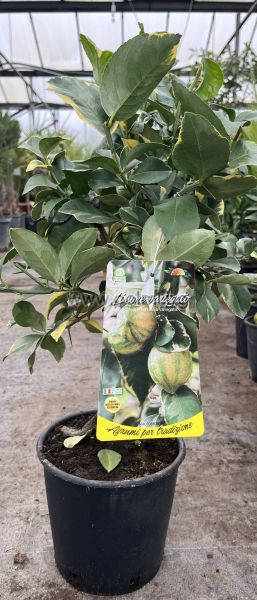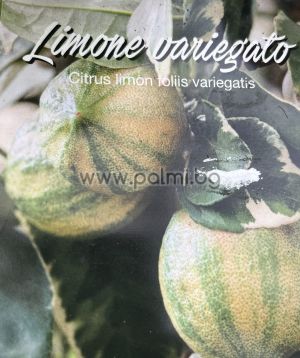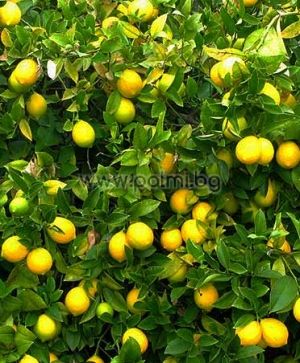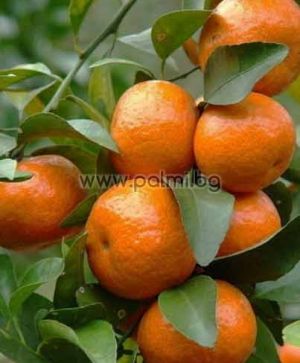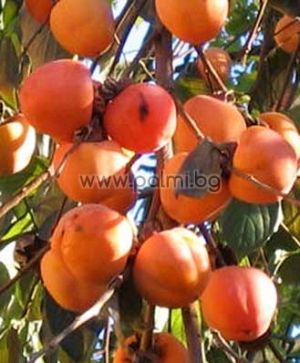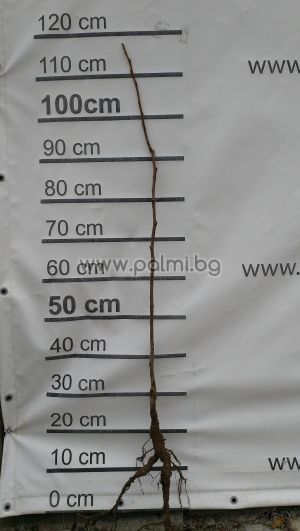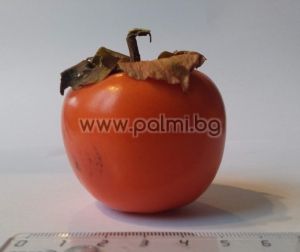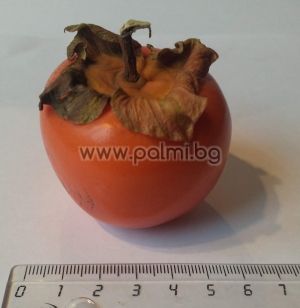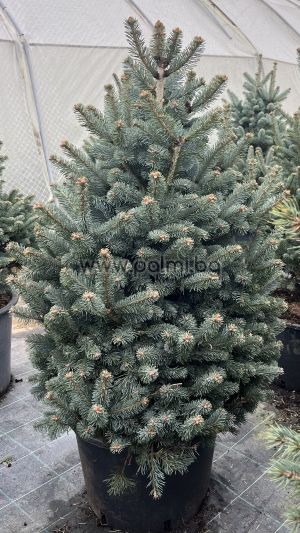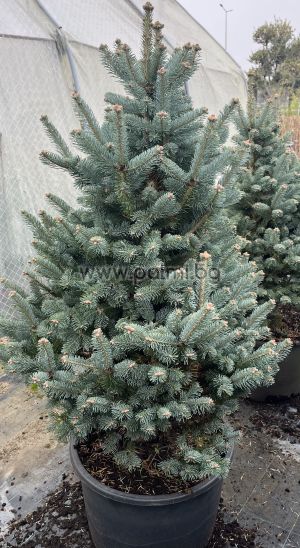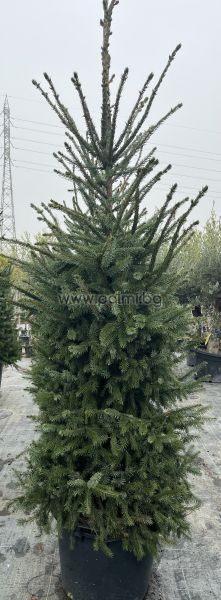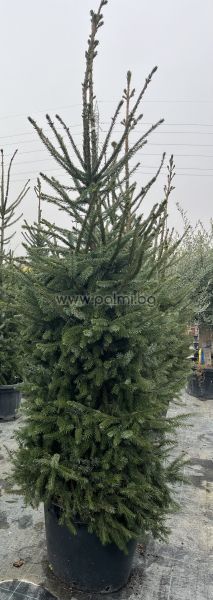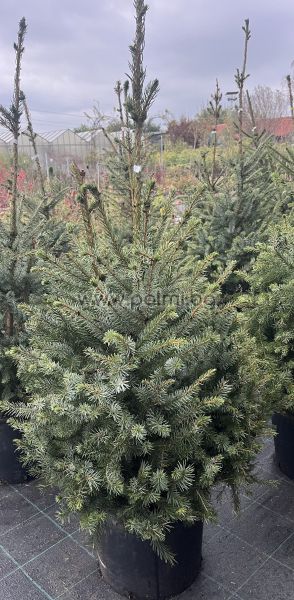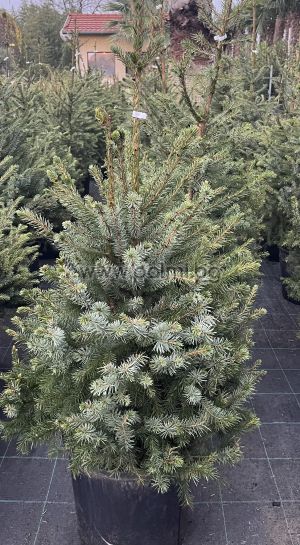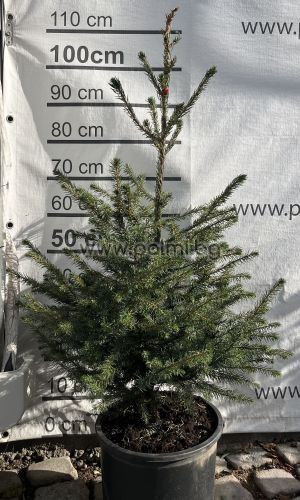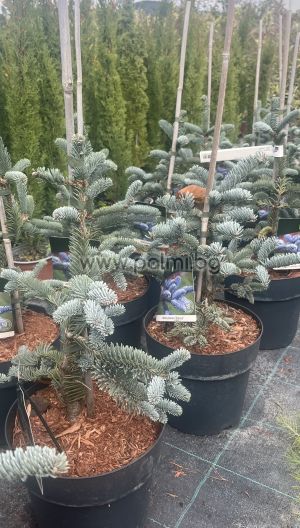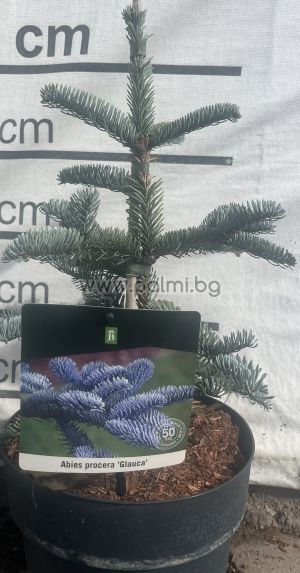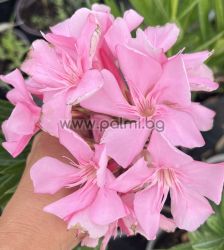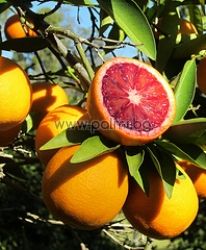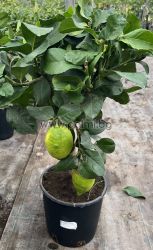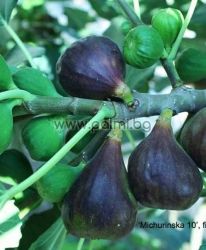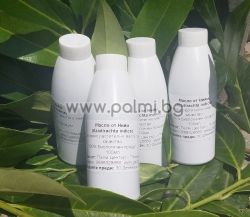Products
Nerium oleander Apple Blossom
Nerium oleander 'Apple Blossom',
Nerium oleander ‘Apple Blossom’ – Elegant and Soft Apple-Blossom Shades
Nerium oleander ‘Apple Blossom’ is a charming oleander variety known for its delicate white-to-soft-pink flowers that resemble blooming apple trees. This makes it one of the most romantic and eye-catching choices for gardens, terraces, balconies, and Mediterranean-style landscapes.
Description
Apple Blossom forms a well-branched, compact shrub that blooms abundantly from early summer until late autumn.
Its blossoms feature gentle pastel tones and a light fragrance. The plant is hardy, low-maintenance, and suitable for pots or for garden planting in warmer regions.
Characteristics
-
Flower color: white to pale pink, “apple blossom” effect
-
Flower type: big,simple
-
Fragrance: light and pleasant
-
Height: 1.5–3 m, depending on pruning and conditions
-
Blooming period: June – October
-
Cold resistance: down to approx. –5°C (winter protection required in colder climates)
-
Location: sunny, warm and sheltered spot
-
Watering: moderate; easy to grow
Why choose Oleander ‘Apple Blossom’?
-
Beautiful, soft and romantic flowers
-
Ideal for terraces, patios, gardens and pool areas
-
Long flowering season
-
Hardy and low-maintenance
-
Perfect for Mediterranean-style designs
Much more information about the Oleanders is available in Bulgarian in our forum:
Availability: 9 pcs
Mandarin Reticulata
Important notice! Most citrus plants on the market are produced for planting in orchards in the Mediterranean countries. They have a large overall height, have high graft and are difficult to shape and support at home. Rootstocks on which they are grafted are very fast growing, which is fine for the open ground in the subtropics, but is not desirable when growing in pot in the temperate climate.
All our small citrus plants are produced specifically for the Bulgarian market and are ideally suited for home cultivation. The rootstocks cause compact growth, grafts are low and this allows making an excellent shape of the crown, to be suitable for growing in pots. The used rootstocks are trifoliate orange (Poncirus trifoliata 'Flying Dragon') and Volkamer lemon, Citrus volkameriana. Trifoliate orange is frost-hardy to -25°C, and significantly increases the cold resistance of plants grafted on it.
Citrus Reticulata
Hybrid Mandarin Kukle from Botanical Garden - Plovdiv, Bulgaria
Citrus reticulata Mandarin – Aromatic Citrus Tree for Home and Garden Growing
Citrus reticulata is the classic mandarin tree – one of the most beloved citrus fruits, known for its naturally sweet flavor and refreshing aroma. The tree has a compact shape, dense green foliage, and excellent productivity, making it ideal for both beginner and experienced gardeners.
The fruits feature a thin, easy-to-peel skin and juicy, vitamin-rich segments full of antioxidants. This mandarin variety is perfect for growing in pots, winter gardens, terraces, or small yards, and with proper care it produces a reliable harvest even in cooler climates.
Advantages of Citrus reticulata
-
Sweet, fragrant fruits perfect for fresh consumption
-
Compact and easy to grow, suitable for shaping
-
Ideal for pots and containers on balconies and terraces
-
Early and regular fruiting
-
High decorative value thanks to its deep-green foliage and bright orange fruits
Growing Requirements
The mandarin prefers a sunny, sheltered location, well-drained soil, and regular watering. Protect the plant from temperatures below –3°C, or overwinter it indoors in colder regions.
Bring a touch of Mediterranean charm to your home or garden with Citrus reticulata – an easy-to-grow mandarin tree that delights with abundant, aromatic fruit and attractive appearance.
Availability: 10 pcs
Blood Orange Moro
Important notice! Most citrus plants on the market are produced for planting in orchards in the Mediterranean countries. They have a large overall height, have high graft and are difficult to shape and support at home. Rootstocks on which they are grafted are very fast growing, which is fine for the open ground in the subtropics, but is not desirable when growing in pot in the temperate climate.
All our small citrus plants are produced specifically for the Bulgarian market and are ideally suited for home cultivation. The rootstocks cause compact growth, grafts are low and this allows making an excellent shape of the crown, to be suitable for growing in pots. The used rootstocks are trifoliate orange (Poncirus trifoliata 'Flying Dragon') and Volkamer lemon, Citrus volkameriana. Trifoliate orange is frost-hardy to -25°C, and significantly increases the cold resistance of plants grafted on it.
Citrus sinensis Moro, Orange from Botanical Garden - Plovdiv, Bulgaria
The Red Orange, or Blood orange, first appeared on the island of Sicily. It was believed that the red color of meat and unique taste are due to the unique climate in Sicily and the volcanic soils. The fruits ripen from February to April.
Today mainly several varieties are growing, and are already found in other parts of Italy as well as Greece and Spain .
As with all other Citrus plants, the orange is susceptible to scales and spider mites and needs to be sprayed twice a year.
In winter it will need a cool place with temperatures 0-10 degrees Celsius. If the temperature is higher, the leaves usually fall off. In summer it needs to be outside and abundantly watered.
Much more information about all citrus species is available on our forum:
Availability: 7 pcs
Lemon Cappuccio
Important notice! Most citrus plants on the market are produced for planting in orchards in the Mediterranean countries. They have a large overall height, have high graft and are difficult to shape and support at home. Rootstocks on which they are grafted are very fast growing, which is fine for the open ground in the subtropics, but is not desirable when growing in pot in the temperate climate.
All our small citrus plants are produced specifically for the Bulgarian market and are ideally suited for home cultivation. The rootstocks cause compact growth, grafts are low and this allows making an excellent shape of the crown, to be suitable for growing in pots. The used rootstocks are trifoliate orange (Poncirus trifoliata 'Flying Dragon') and Volkamer lemon, Citrus volkameriana. Trifoliate orange is frost-hardy to -25°C, and significantly increases the cold resistance of plants grafted on it.
Citrus Cappuccio
Lemon from Botanical Garden - Plovdiv, Bulgaria
Citrus limon Cappuccio
Citrus limon Cappuccio is a distinctive lemon variety originating from Italy, recognized for its unique fruit shape resembling a small “cap”. This characteristic form gives the variety both its name and its strong ornamental value.
The fruits are medium-sized with a bright yellow, aromatic peel rich in essential oils. The flesh is juicy and offers a classic lemon flavor, fresh and pleasantly acidic. Cappuccio is appreciated for both decorative and culinary use, suitable for fresh consumption, beverages, desserts, and cooking.
The variety is well suited for container growing, producing flowers and fruits under proper light and care, making it a favorite among citrus enthusiasts and collectors.
Much more information about all citrus species is available on our forum:
Availability: 25 pcs
Rosso Limette, Lime
Important notice! Most citrus plants on the market are produced for planting in orchards in the Mediterranean countries. They have a large overall height, have high graft and are difficult to shape and support at home. Rootstocks on which they are grafted are very fast growing, which is fine for the open ground in the subtropics, but is not desirable when growing in pot in the temperate climate.
All our small citrus plants are produced specifically for the Bulgarian market and are ideally suited for home cultivation. The rootstocks cause compact growth, grafts are low and this allows making an excellent shape of the crown, to be suitable for growing in pots. The used rootstocks are trifoliate orange (Poncirus trifoliata 'Flying Dragon') and Volkamer lemon, Citrus volkameriana. Trifoliate orange is frost-hardy to -25°C, and significantly increases the cold resistance of plants grafted on it.
Citrus
Rosso Limette, Lime from Botanical Garden - Plovdiv, Bulgaria
If you like cocktails, then this is your Citrus.
Citrus Lime Rosso variety description
Citrus Lime Rosso is a distinctive lime variety known for its uniquely reddish-colored fruits, which set it apart from traditional green limes. As the fruit ripens, the peel changes from green to deep red or dark orange, while the flesh remains juicy and aromatic.
The flavor is freshly acidic yet well-balanced, with subtle sweet undertones and a rich citrus aroma. Lime Rosso is valued both for its decorative appeal and culinary versatility, making it suitable for fresh use, beverages, desserts, and gourmet recipes.
This variety is especially popular among citrus collectors and is well adapted for container growing, producing fruit under proper care and bright conditions.
As with all other Citrus plants, the orange is susceptible to scales and spider mites and needs to be sprayed twice a year.
In winter it will need a cool place with temperatures 0-10 degrees Celsius. If the temperature is higher, the leaves usually fall off. In summer it needs to be outside and abundantly watered.
Much more information about all citrus species is available on our forum:
Availability: 9 pcs
Australian finger lime, Caviar lime
Australian finger lime, Caviar lime
Citrus australasica var. Sanguinea
Australian lime or caviar is a native of the coastal border region of Queensland and New South Wales, Australia.
This is a thorny shrub or small tree with edible fruits. Theyr flesh is a set of globular vesicles, also called pearls, which is why the plants are called caviar.
Тhe peel is rough and thin, not easily injured and can be dried and use as a flavouring spice.
The juice is acidic like that of the other lime varieties.
Availability: 6 pcs
Tahiti Limette, Lime
Important notice! Most citrus plants on the market are produced for planting in orchards in the Mediterranean countries. They have a large overall height, have high graft and are difficult to shape and support at home. Rootstocks on which they are grafted are very fast growing, which is fine for the open ground in the subtropics, but is not desirable when growing in pot in the temperate climate.
All our small citrus plants are produced specifically for the Bulgarian market and are ideally suited for home cultivation. The rootstocks cause compact growth, grafts are low and this allows making an excellent shape of the crown, to be suitable for growing in pots. The used rootstocks are trifoliate orange (Poncirus trifoliata 'Flying Dragon') and Volkamer lemon, Citrus volkameriana. Trifoliate orange is frost-hardy to -25°C, and significantly increases the cold resistance of plants grafted on it.
Citrus aurantifolia
Tahiti Limette, Lime from Botanical Garden - Plovdiv, Bulgaria
If you like cocktails, then this is your Citrus.
As with all other Citrus plants, the orange is susceptible to scales and spider mites and needs to be sprayed twice a year.
In winter it will need a cool place with temperatures 0-10 degrees Celsius. If the temperature is higher, the leaves usually fall off. In summer it needs to be outside and abundantly watered.
Much more information about all citrus species is available on our forum:
Availability: 20 pcs
Selected coldhardy olive variety Frantoio
Olea europaea Frantoio
Selected coldhardy olive variety Frantoio from Botanical Garden - Plovdiv, Bulgaria
Frantoio Olive – A Classic Italian Variety for Aromatic, Premium-Quality Olive Oil
The Frantoio olive is one of the most respected and traditional Italian varieties, renowned for its exceptionally high oil content, rich aroma, and outstanding olive oil quality. The tree features an elegant, deeply branched crown and vigorous growth, making it a preferred choice for both professional producers and home gardeners.
The fruits are small to medium in size but very rich in oil, producing olive oil that is intensely fruity, slightly peppery, and distinctly Mediterranean in flavor. Frantoio olive trees show excellent adaptability and good cold tolerance, allowing them to be successfully grown in a wide range of climatic conditions.
Advantages of the Frantoio Olive
-
High oil content and exceptional flavor
-
Highly valued variety for premium olive oil production
-
Good cold tolerance and adaptability
-
Compact, attractive crown – also suitable for ornamental use
-
Easy to grow; ideal for yards, gardens, and large containers
Add a touch of true Mediterranean character to your home or garden with the Frantoio olive – a variety that combines productivity, resilience, and unmatched flavor.
Through many years of trials, we have tested more than 100 olive varieties from around the world. Based on our results under local conditions, we selected only the most cold-hardy and adaptable varieties.
We have tested over 100 varieties of olives from all around the world. In these tests we have selected the most cold-hardy varieti
More information about the olives is available in Bulgarian in our forum:
Availability: 55 pcs
Selected coldhardy olive variety Leccino
Olea europaea Leccino
Selected coldhardy olive variety Leccino from Botanical Garden - Plovdiv, Bulgaria
We have tested over 100 varieties of olives from all around the world. In these tests we have selected the most cold-hardy varieti
Olive Tree ‘Leccino’ – Italian elegance and high productivity for your garden
The Leccino olive tree is one of the most popular and valued Italian varieties, known for its high resilience, consistent yields, and excellent oil quality. The tree forms a beautiful, dense crown and grows quickly, making it ideal both as an ornamental plant and for productive cultivation.
Leccino olives are medium-sized, fleshy, and rich in aroma, producing olive oil that is delicately fruity, balanced, and highly appreciated worldwide. This variety adapts well to different climates and offers good cold resistance, making it suitable for gardens in temperate regions.
More information about the olives is available in Bulgarian in our forum:
Availability: 56 pcs
Loquat
Eriobotrya japonica, Loquat from Botanical Garden - Plovdiv, Bulgaria
Eriobotria japonica ‘Gigante’ – giant loquat with large, sweet and aromatic fruits
Eriobotria japonica ‘Gigante’ is an impressive variety of loquat known for its exceptionally large, juicy, and fragrant fruits, significantly bigger than those of standard cultivars. The fruits ripen in warm orange-yellow shades and offer a delicate, sweet flavor with a subtle tropical note.
The plant forms a beautiful evergreen crown with wide, glossy leaves, making it not only a productive fruit tree but also a decorative highlight in any garden or yard. The ‘Gigante’ cultivar is hardy, easy to grow, and well-suited for areas with mild winters.
rum:
Availability: 49 pcs
Mango variety Palmer
Mangifera indica cv. Palmer, Mango variety Palmer
from Botanical garden - Plovdiv, Bulgaria
Mango Palmer – exotic fruit plant with rich yield and exceptional flavor
Add a tropical touch to your garden with the Palmer mango plant, one of the most popular varieties for home cultivation. Palmer produces large, sweet, and aromatic fruits with a small seed and dense, tender flesh. The plant is highly adaptable, productive, and suitable for growing in a garden, greenhouse, or large pot.
Much more information on the cultivation of Mango is available in Bulgarian in our forum:
Availability: 29 pcs
1 meters of light rope for winter heating of palm trees
Light rope, For winter heating of palm trees
Please note, this is just a piece of light rope, that comes to you just cut and with no connection to electricity. If you want a ready-made light rope, you should order connection separately. If you want a longer cable, you should order the cable separately. If you want a thermostat, you should order it separately. We will connect everything and send the finished system. You just have to install on the palm tree and connect it to the electricity.. If you are unsure how to protect winter palm trees, please visit: http://www.polarpalm.net/bg/winterpalms.html
Price is for a piece of 1 meters. The light rope can be cut on a pieces with a minimum length of 1 meters. A full roll is 90 meters.
If you want to order a thermostat and a light rope and need them connected by us, please order connection here: http://palmi.bg/product.php?ProductID=447
If you would like to order a thermostat: http://palmi.bg/product.php?ProductID=445
Availability: 87 pcs
Hybrid Mandarin Cleopatra
Important notice! Most citrus plants on the market are produced for planting in orchards in the Mediterranean countries. They have a large overall height, have high graft and are difficult to shape and support at home. Rootstocks on which they are grafted are very fast growing, which is fine for the open ground in the subtropics, but is not desirable when growing in pot in the temperate climate.
All our small citrus plants are produced specifically for the Bulgarian market and are ideally suited for home cultivation. The rootstocks cause compact growth, grafts are low and this allows making an excellent shape of the crown, to be suitable for growing in pots. The used rootstocks are trifoliate orange (Poncirus trifoliata 'Flying Dragon') and Volkamer lemon, Citrus volkameriana. Trifoliate orange is frost-hardy to -25°C, and significantly increases the cold resistance of plants grafted on it.
Citrus Cleopatra
Hybrid Mandarin Cleopatra from Botanical Garden - Plovdiv, Bulgaria
English Translation — Citrus Mandarina Cleopatra
Citrus Mandarina Cleopatra – a hardy mandarin with decorative fruits and a compact crown
Citrus Mandarina Cleopatra, also known as Cleopatra Mandarin, is one of the most resilient and adaptable citrus varieties. It is valued both as a decorative plant and as a fruit-bearing tree with small, aromatic mandarins. This variety is perfect for growers looking for a low-maintenance citrus with strong ornamental appeal.
Characteristics
-
Fruits: small, bright orange, with a firm peel and strong citrus aroma.
-
Taste: refreshing and slightly tangy — excellent for drinks, marmalades, and flavoring.
-
Blooming: delicate white flowers with an intense fragrance appearing once or twice a year.
-
Growth: compact and dense, ideal for shaping and container growing.
-
Foliage: dark green, glossy, and highly decorative throughout the year.
-
Hardiness: one of the most durable citrus types, tolerating lower temperatures and various soil types.
-
Uses: also widely used as a rootstock thanks to its excellent adaptability.
Advantages
-
✔ Extremely hardy and low-maintenance
-
✔ Perfect for beginners and container growing
-
✔ Compact growth suitable for balconies, terraces, and winter gardens
-
✔ Decorative small fruits that stay long on the tree
-
✔ Strong growth and excellent adaptability
Availability: 10 pcs
Citrus Lemon Foliis Variegatis
Citrus limon Foliis variegatis
Lemon Foliis Variegatis from Botanical Garden - Plovdiv, Bulgaria
Citrus Limon Foliis Variegatis – variegated lemon with striking foliage and aromatic fruits
Citrus Limon Foliis Variegatis is an impressive lemon variety distinguished by its variegated leaves, combining deep green tones with cream or yellow patterns. This makes it one of the most decorative citrus plants for both indoor and outdoor cultivation. In addition to its unique foliage, the variety also produces variegated fruits that develop into bright yellow, highly aromatic lemons when fully ripe.
Characteristics of Citrus Limon Foliis Variegatis
-
Variegated foliage – leaves feature green and cream-yellow marbling, creating a distinctive ornamental appearance.
-
Aromatic blossoms – white flowers with a soft pink tint on the inside, strongly fragrant.
-
Fruits: often start as striped green-yellow lemons, turning bright yellow at maturity.
-
Taste: classic lemon flavour – juicy, tangy, and highly aromatic.
-
Growth: medium vigorous; ideal for pots, terraces, balconies, and winter gardens.
-
Decorative value: exceptionally high thanks to the unusual leaf patterns and colourful fruits.
-
Hardiness: suitable for container growing; tolerates brief cold spells but prefers winter protection.
Advantages of Citrus Limon Foliis Variegatis
-
✔ Highly decorative plant for modern interiors and outdoor areas
-
✔ Striped leaves and fruits that attract attention year-round
-
✔ Perfect for container cultivation
-
✔ Produces large, fragrant lemons for culinary use
-
✔ Combines ornamental beauty with practicality – a rare trait among citrus varieties
Availability: 17 pcs
Lemon Fiore
Important notice! Most citrus plants on the market are produced for planting in orchards in the Mediterranean countries. They have a large overall height, have high graft and are difficult to shape and support at home. Rootstocks on which they are grafted are very fast growing, which is fine for the open ground in the subtropics, but is not desirable when growing in pot in the temperate climate.
All our small citrus plants are produced specifically for the Bulgarian market and are ideally suited for home cultivation. The rootstocks cause compact growth, grafts are low and this allows making an excellent shape of the crown, to be suitable for growing in pots. The used rootstocks are trifoliate orange (Poncirus trifoliata 'Flying Dragon') and Volkamer lemon, Citrus volkameriana. Trifoliate orange is frost-hardy to -25°C, and significantly increases the cold resistance of plants grafted on it.
Citrus x Fiore
Fiore Lemon from Botanical Garden - Plovdiv, Bulgaria
Citrus Limon Fiore – lemon variety with continuous flowering and abundant fruiting
Citrus Limon Fiore is a highly popular lemon variety known for its nearly year-round flowering. It combines vigorous growth, strong decorative appeal, and excellent productivity, making it ideal for home gardens, terraces, patios, and winter gardens.
Characteristics of Citrus Limon Fiore
-
Continuous flowering – produces fragrant white blossoms throughout most of the year.
-
Fruiting: yields large, oval lemons with bright yellow skin and high juice content.
-
Taste: classic, fresh, intensely sour flavour – perfect for drinks, cooking, and preserves.
-
Growth: moderately vigorous plant with a dense, deep-green crown.
-
Peel: smooth, aromatic, rich in essential oils.
-
Hardiness: tolerates light cold and grows excellently in containers.
-
Aroma: flowers and leaves carry a strong, typical lemon scent.
Advantages of Citrus Limon Fiore
-
✔ Year-round flowering – rare for lemon varieties
-
✔ Heavy yields throughout the year
-
✔ High ornamental value for indoor and outdoor use
-
✔ Easy to grow, suitable even for beginners
-
✔ Perfect for container growing on balconies, patios, and indoors
The graft is 20-25 cm high
Much more information about all citrus species is available on our forum:
Availability: 7 pcs
Hybrid Mandarin Kukle(Citrus Margarita x citrus Clementina)
Important notice! Most citrus plants on the market are produced for planting in orchards in the Mediterranean countries. They have a large overall height, have high graft and are difficult to shape and support at home. Rootstocks on which they are grafted are very fast growing, which is fine for the open ground in the subtropics, but is not desirable when growing in pot in the temperate climate.
All our small citrus plants are produced specifically for the Bulgarian market and are ideally suited for home cultivation. The rootstocks cause compact growth, grafts are low and this allows making an excellent shape of the crown, to be suitable for growing in pots. The used rootstocks are trifoliate orange (Poncirus trifoliata 'Flying Dragon') and Volkamer lemon, Citrus volkameriana. Trifoliate orange is frost-hardy to -25°C, and significantly increases the cold resistance of plants grafted on it.
Citrus Kukle
Hybrid Mandarin Kukle from Botanical Garden - Plovdiv, Bulgaria
Citrus Kucle – a unique citrus hybrid with exceptional ornamental and fruit qualities
Citrus Kucle is a rare and impressive citrus variety, created by crossing kumquat and clementine. This hybrid combines the best of both parents – the ornamental charm of kumquat and the delightful fragrance of clementine. The result is a compact, evergreen plant that produces small orange fruits with a fine citrus aroma and excellent flavor.
Characteristics of Citrus Kucle
-
Compact, evergreen plant with a dense canopy – perfect for container growing.
-
Thornless, safe and easy to maintain.
-
Fragrant white blossoms, blooming generously throughout the season.
-
Fruiting: small, orange, slightly oval fruits that can be eaten whole, including the peel.
-
Taste: a balanced mix of kumquat’s refreshing acidity and clementine’s gentle sweetness.
-
Cold tolerance: withstands temperatures down to approx. –4°C, suitable for winter gardens and warmer outdoor climates.
-
Size: reaches about 2–3 m outdoors, remaining more compact in pots.
Advantages of Citrus Kucle
-
Perfect for decorative arrangements, terraces, patios, and interior spaces.
-
Produces edible fruits ideal for fresh consumption, jams, drinks, and desserts.
-
Easy-care variety with strong resilience and long-lasting ornamental appeal.
-
Suitable for both beginners and experienced citrus enthusiasts.
As with all other Citrus plants, the orange is susceptible to scales and spider mites and needs to be sprayed twice a year.
In winter it will need a cool place with temperatures 0-10 degrees Celsius. If the temperature is higher, the leaves usually fall off. In summer it needs to be outside and abundantly watered.
Much more information about all citrus species is available in Bulgarian on our forum:
Availability: 40 pcs
Japanese Persimmon, Kaki Sheng
Japanese Persimmon, Kaki Sheng
Diospyros Kaki Sheng
The ‘Sheng’ persimmon (Diospyros kaki) is an exceptional Asian variety known for its rich flavor, early ripening, and decorative appearance. The fruits are medium to large, with a deep orange color and smooth, creamy texture. When fully ripe, they offer a pleasantly sweet taste with subtle nutty notes — perfect for fresh eating, drying, or making desserts.
The tree grows moderately, is cold-hardy, and adapts well to various soil types, making it suitable for home gardens in temperate climates. Besides its delicious fruits, the ‘Sheng’ persimmon adds ornamental value: its golden-red autumn foliage makes it a true highlight in any garden.
Advantages:
-
Large, sweet, and aromatic fruits
-
Compact, easy-to-grow tree
-
Cold-resistant and high-yielding
-
Decorative autumn foliage
-
Ideal for fresh use or processing
Ripening period: Mid-September to late October
Pollination: Self-pollinating variety
Use: Fresh consumption, drying, jams, dessert
Important! The plants are bare rooted, ennobled. Because of the limitation in the dimensions of the transport package, the plants can be cut at 100 cm in height.
Saijo is one of the most preferred varieties of persimonom. The plants bloom in summer with white-pink flowers. The fruits are aromatic and sweet, medium-sized, conical and ribbed and seedless if not pollinated. The fruits ripens in mid-autumn and it is advisable to consume after softening because the amount of tannins decreases with increasing maturity.
Availability: 6 pcs
Diospyros kaki ‘Tone Wase’ – Early Japanese Persimmon with Honey-Sweet Flavor
Diospyros kaki ‘Tone Wase’ – Early Japanese Persimmon with Honey-Sweet Flavor
Diospyros kaki ‘Tone Wase’ is a highly valued Japanese persimmon variety, famous for its early ripening, exceptional sweetness, and reliable productivity. It’s an ideal choice for gardeners who want to enjoy delicious, home-grown persimmons even in cooler climates.
The fruits are large, round to slightly flattened, with a bright orange skin and rich, honey-like taste. The flesh is firm and juicy when harvested early, becoming soft, sweet, and non-astringent when fully ripe. This variety is self-pollinating, so it bears fruit abundantly even when planted alone.
🌿 Key Features:
-
Origin: Japan
-
Type: self-pollinating
-
Ripening time: late September – early October
-
Fruit: large, orange-red, glossy skin
-
Flavor: honey-sweet, non-astringent, aromatic
-
Height: 4–5 m
-
Soil: light, fertile, and well-drained
-
Hardiness: up to –15°C
💚 Advantages:
-
Very early-ripening – among the earliest persimmon varieties
-
Self-fertile, easy to grow and productive
-
Exceptionally sweet, flavorful fruits
-
Great for fresh eating, drying, or desserts
-
Highly ornamental with bright orange fruits and golden foliage in autumn
✨ Diospyros kaki ‘Tone Wase’ combines beauty, productivity, and sweetness – a perfect addition to any garden that offers a taste of Japan’s finest autumn fruit.
Important! The plants are bare rooted, ennobled. Because of the limitation in the dimensions of the transport package, the plants can be cut at 100 cm in height.
This native variety develops medium sized fruits. The plants are in high yield.
Availability: 6 pcs
Abies lasiocarpa ‘Compacta’ – The Compact Subalpine Fir
<h3 data-end="2129" data-start="2063" style="text-align: center;"><span style="color:#008000;"><span style="font-size:24px;"><strong data-end="2129" data-start="2070">Abies lasiocarpa ‘Compacta’ – The Compact Subalpine Fir</strong></span></span></h3>
<p data-end="2426" data-start="2131"><strong data-end="2162" data-start="2131">Abies lasiocarpa ‘Compacta’</strong>, known as the <strong data-end="2202" data-start="2177">Compact Subalpine Fir</strong>, is a stunning dwarf conifer prized for its <strong data-end="2271" data-start="2247">rounded, dense crown</strong> and <strong data-end="2300" data-start="2276">silvery-blue needles</strong>. This slow-growing, compact form of the Subalpine Fir is ideal for <strong data-end="2423" data-start="2368">small gardens, rockeries, and decorative containers</strong>.</p>
<p data-end="2690" data-start="2428">The needles are <strong data-end="2476" data-start="2444">short, soft, and blue-silver</strong>, giving the plant a delicate, metallic sheen that shimmers beautifully in sunlight. It maintains its perfect shape year-round with minimal care, making it one of the most elegant and easy-to-grow dwarf conifers.</p>
<p data-end="2714" data-start="2692">🌳 <strong data-end="2712" data-start="2695">Key Features:</strong></p>
<ul data-end="3020" data-start="2715">
<li data-end="2755" data-start="2715">
<p data-end="2755" data-start="2717"><strong data-end="2728" data-start="2717">Height:</strong> 1–1.5 m (after 10 years)</p>
</li>
<li data-end="2799" data-start="2756">
<p data-end="2799" data-start="2758"><strong data-end="2767" data-start="2758">Form:</strong> compact, rounded, symmetrical</p>
</li>
<li data-end="2851" data-start="2800">
<p data-end="2851" data-start="2802"><strong data-end="2814" data-start="2802">Needles:</strong> soft, silvery-blue, densely packed</p>
</li>
<li data-end="2877" data-start="2852">
<p data-end="2877" data-start="2854"><strong data-end="2870" data-start="2854">Growth rate:</strong> slow</p>
</li>
<li data-end="2925" data-start="2878">
<p data-end="2925" data-start="2880"><strong data-end="2889" data-start="2880">Soil:</strong> well-drained, fertile, humus-rich</p>
</li>
<li data-end="2966" data-start="2926">
<p data-end="2966" data-start="2928"><strong data-end="2938" data-start="2928">Light:</strong> full sun to partial shade</p>
</li>
<li data-end="3020" data-start="2967">
<p data-end="3020" data-start="2969"><strong data-end="2983" data-start="2969">Hardiness:</strong> very frost-resistant and adaptable</p>
</li>
</ul>
<p data-end="3042" data-start="3022">💚 <strong data-end="3040" data-start="3025">Advantages:</strong></p>
<ul data-end="3335" data-start="3043">
<li data-end="3095" data-start="3043">
<p data-end="3095" data-start="3045">Beautiful <strong data-end="3093" data-start="3055">dwarf fir with silver-blue foliage</strong></p>
</li>
<li data-end="3171" data-start="3096">
<p data-end="3171" data-start="3098">Perfect for <strong data-end="3169" data-start="3110">rock gardens, containers, and Japanese-style landscapes</strong></p>
</li>
<li data-end="3223" data-start="3172">
<p data-end="3223" data-start="3174">Keeps its shape naturally – no pruning required</p>
</li>
<li data-end="3276" data-start="3224">
<p data-end="3276" data-start="3226">Hardy, long-lived, and decorative all year round</p>
</li>
<li data-end="3335" data-start="3277">
<p data-end="3335" data-start="3279">Adds elegance and texture to any landscape composition</p>
</li>
</ul>
<p data-end="3488" data-start="3337">✨ <strong data-end="3370" data-start="3339">Abies lasiocarpa ‘Compacta’</strong> is a true gem among dwarf conifers – a plant that embodies <strong data-end="3469" data-start="3430">grace, harmony, and timeless beauty</strong> in every garden.</p>
<p data-end="3687" data-start="3490">🔑 <strong data-end="3510" data-start="3493">SEO keywords:</strong></p>
Availability: 20 pcs
Picea omorika – The Elegant Serbian Spruce
Picea omorika – The Elegant Serbian Spruce
Picea omorika, known as the Serbian Spruce, is one of the most graceful and decorative evergreen conifers used in landscape design. Native to the mountainous regions of Serbia and Bosnia, this species stands out with its narrow, pyramidal crown and dense, upright growth habit that keeps a perfect shape all year round.
Its needles are dark green on top and silvery-blue underneath, creating a shimmering effect that brings depth and texture to any garden. With its refined appearance and high resilience, Picea omorika is an excellent choice for both private gardens and urban environments.
🌳 Key Features:
-
Height: 10–20 m (up to 30 m in natural habitats)
-
Crown: slender, pyramidal, and dense
-
Needles: dark green with a silver-blue underside
-
Growth rate: slow to moderate
-
Soil: prefers well-drained, moist but not waterlogged soil
-
Light: full sun to partial shade
-
Hardiness: excellent frost and pollution resistance
💚 Advantages:
-
Ideal for hedges, alleys, solitary planting, and rock gardens
-
Keeps its symmetrical, elegant shape with minimal care
-
Hardy and adaptable, perfect for cold climates and city areas
-
Provides year-round greenery and structure to the landscape
-
A symbol of natural harmony, freshness, and refinement
✨ Picea omorika adds timeless beauty to any outdoor space – an evergreen masterpiece that combines strength, elegance, and serene charm.
Suitable for both yard decoration and Christmas decoration.
Availability: 50 pcs
Picea omorika – The Elegant Serbian Spruce
Picea omorika – The Elegant Serbian Spruce
Picea omorika, known as the Serbian Spruce, is one of the most graceful and decorative evergreen conifers used in landscape design. Native to the mountainous regions of Serbia and Bosnia, this species stands out with its narrow, pyramidal crown and dense, upright growth habit that keeps a perfect shape all year round.
Its needles are dark green on top and silvery-blue underneath, creating a shimmering effect that brings depth and texture to any garden. With its refined appearance and high resilience, Picea omorika is an excellent choice for both private gardens and urban environments.
🌳 Key Features:
-
Height: 10–20 m (up to 30 m in natural habitats)
-
Crown: slender, pyramidal, and dense
-
Needles: dark green with a silver-blue underside
-
Growth rate: slow to moderate
-
Soil: prefers well-drained, moist but not waterlogged soil
-
Light: full sun to partial shade
-
Hardiness: excellent frost and pollution resistance
💚 Advantages:
-
Ideal for hedges, alleys, solitary planting, and rock gardens
-
Keeps its symmetrical, elegant shape with minimal care
-
Hardy and adaptable, perfect for cold climates and city areas
-
Provides year-round greenery and structure to the landscape
-
A symbol of natural harmony, freshness, and refinement
✨ Picea omorika adds timeless beauty to any outdoor space – an evergreen masterpiece that combines strength, elegance, and serene charm.
Suitable for both yard decoration and Christmas decoration.
Availability: 50 pcs
Picea omorika – The Elegant Serbian Spruce
Picea omorika – The Elegant Serbian Spruce
Picea omorika, known as the Serbian Spruce, is one of the most graceful and decorative evergreen conifers used in landscape design. Native to the mountainous regions of Serbia and Bosnia, this species stands out with its narrow, pyramidal crown and dense, upright growth habit that keeps a perfect shape all year round.
Its needles are dark green on top and silvery-blue underneath, creating a shimmering effect that brings depth and texture to any garden. With its refined appearance and high resilience, Picea omorika is an excellent choice for both private gardens and urban environments.
🌳 Key Features:
-
Height: 10–20 m (up to 30 m in natural habitats)
-
Crown: slender, pyramidal, and dense
-
Needles: dark green with a silver-blue underside
-
Growth rate: slow to moderate
-
Soil: prefers well-drained, moist but not waterlogged soil
-
Light: full sun to partial shade
-
Hardiness: excellent frost and pollution resistance
💚 Advantages:
-
Ideal for hedges, alleys, solitary planting, and rock gardens
-
Keeps its symmetrical, elegant shape with minimal care
-
Hardy and adaptable, perfect for cold climates and city areas
-
Provides year-round greenery and structure to the landscape
-
A symbol of natural harmony, freshness, and refinement
✨ Picea omorika adds timeless beauty to any outdoor space – an evergreen masterpiece that combines strength, elegance, and serene charm.
Suitable for both yard decoration and Christmas decoration.
Availability: 49 pcs
Tulip tree
Liriodendron tulipifera ‘Aureomarginata’ – The Golden-Edged Tulip Tree
Liriodendron tulipifera ‘Aureomarginata’, also known as the Golden Tulip Tree, is a truly stunning ornamental variety that brings elegance and color to any landscape. Its large, deep green leaves edged with a fine golden-yellow margin create a natural glow that makes the crown appear bright and lively throughout the season.
During summer, the foliage shines with a vibrant contrast of fresh green and soft gold, while in autumn it transforms into rich shades of yellow and orange. A perfect choice for anyone seeking decorative foliage with year-round appeal and classic beauty.
🌳 Key Features:
-
Height: 15–20 m at maturity
-
Crown: symmetrical, upright, and dense
-
Leaves: green with golden-yellow margins, turning bright yellow in autumn
-
Flowers: creamy-yellow, tulip-shaped blossoms
-
Blooming period: May – June
-
Requirements: sunny position, well-drained and fertile soil
-
Hardiness: highly resistant to cold and urban conditions
💚 Advantages:
-
Unique gold-edged foliage for outstanding ornamental effect
-
Adds refined and luxurious character to gardens, parks, and alleys
-
Ideal for solitary planting or avenue compositions
-
Low maintenance and extremely decorative
-
Eye-catching in every season
✨ Liriodendron tulipifera ‘Aureomarginata’ combines natural grace with timeless elegance. Its golden-bordered leaves shimmer in the sunlight, creating a warm, glowing accent in any landscape.
Availability: 29 pcs
Grafted White Fir
Abies procera Glauca,
English Version – Abies procera ‘Glauca’
Abies procera ‘Glauca’ – The Blue Noble Fir for an Elegant Garden
Bring sophistication and year-round color to your garden with Abies procera ‘Glauca’ – a stunning noble fir with silver-blue needles and a perfectly symmetrical shape. This evergreen conifer is one of the most attractive ornamental trees, favored by both landscape designers and gardening enthusiasts.
The needles have a striking metallic-blue hue that remains vibrant throughout all seasons. Its naturally dense, conical crown gives the tree a graceful appearance without the need for pruning.
🌤️ Growing Conditions:
-
Prefers sunny to partially shaded locations
-
Thrives in well-drained, moderately moist soil
-
Frost-hardy and tolerant of urban environments
-
Slow to moderate growth, ideal for smaller gardens
🌲 Size:
-
Height: up to 8 m
-
Crown width: approx. 3–4 m
💚 Perfect for:
-
Single planting (specimen tree)
-
Mixed conifer compositions
-
Garden landscapes, parks, and hotel areas
✨ Advantages:
-
Beautiful blue-silver color all year long
-
Low maintenance requirements
-
Long-lived, hardy, and highly decorative
🔍 SEO keywords: Abies procera Glauca, blue noble fir, conifer for garden, ornamental evergreen tree, silver-blue fir, landscape conifer.
Availability: 14 pcs

